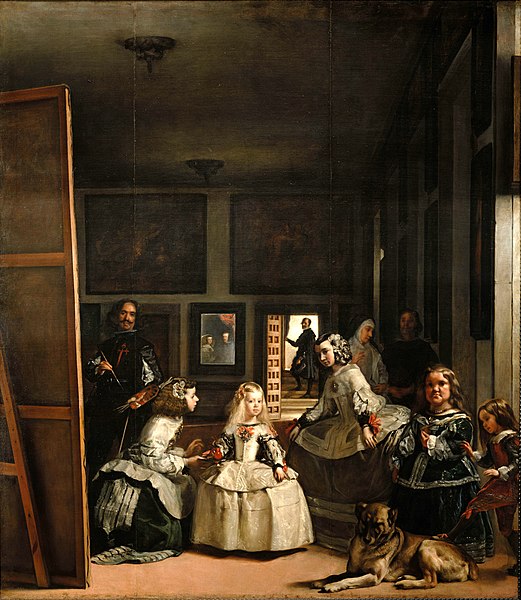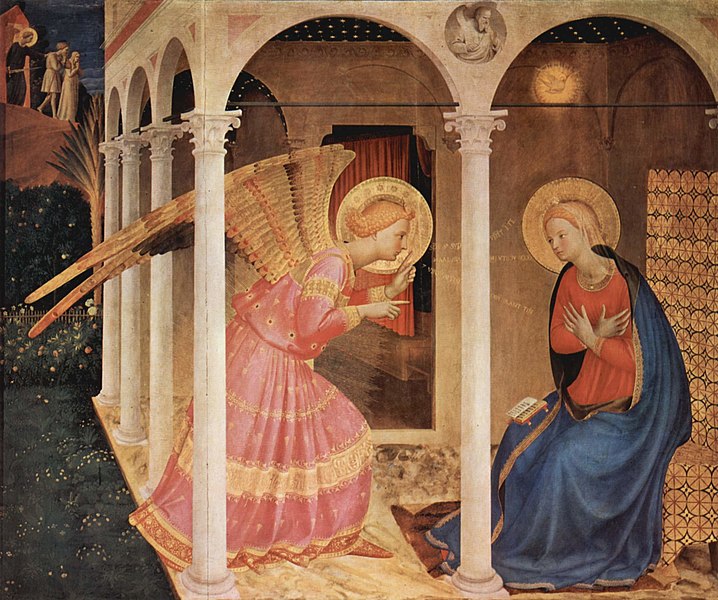Analyzing seventeenth- and eighteenth-century 2D art
Help Questions
AP Art History › Analyzing seventeenth- and eighteenth-century 2D art

Figure 3

Figure 4
Figure 3 represents the King of .
Scotland
Spain
France
Portugal
Explanation
Figure 3 is Anthony van Dyck's triple portrait of King Charles I of England, Scotland, and Ireland from 1635. Charles inherited all of his crowns from his father James, and ruled all three beginning in 1625. Charles' reign was cut short after the English Civil War saw his subjects in England overthrow him and cut off his head in 1649.
astronomer
geologist
priest
king
Explanation
Johannes Vermeer did title his painting The Astronomer, but the painting also gives many clues as to the nature of the individual's profession. The placement of the man working in a study with tools indicates he was some kind of scholar, and not a notable figure in his society. The use of a globe, and his looking out a window, indicate his interest in astronomy, which in the seventeenth century utilized "celestial globes" portraying stars.
Figure 3: The Night Watch by Rembrandt van Rijn (1642)
Figure 4: The Astronomer by Johannes Vermeer (1668)
motion in a group portrait
members of the military
Dutch people
light and dark contrast
Explanation
In one sense, Rembrandt van Rijn's The Night Watch is similar to many other Dutch golden-age works, focusing on light and dark contrasts, scenes of Dutch life, and celebrating Dutch unity against the Spanish in war. However, Rembrandt's sense of motion and movement stands out in this painting, with every figure in the painting doing something and interacting with each other and the painting's viewer.
Figure 3: The Night Watch by Rembrandt van Rijn (1642)
Figure 4: The Astronomer by Johannes Vermeer (1668)
playful
serious
reserved
uncertain
Explanation
While de Goya based his painting on Velázquez', their portrayals of a royal family are completely different. Where Velázquez show the young princess Margaret Teresa smiling, with attendants and jesters trying to please her, de Goya shows only the royal family looking extremely uncomfortable. The seriousness of the family of Charles IV in a painting based on the playful Las Meninas was intentionally cultivated by de Goya.
Figure 1: Las Meninas by Diego Velázquez (1656)
Figure 2: Charles IV of Spain and His Family Francisco de Goya (1801)
Questions 7-12 are based on Figures 3 and 4.

Figure 3

Figure 4
Figure 3 most likely has three portraits because .
all of the other answers
it shows off the artist's skill
it is a study for a sculpture
it presents the King in different clothing
Explanation
As a practical purpose, this triple portrait of King Charles I, by Anthony van Dyck, was probably needed so that a bust could be made by a sculptor the King could not sit for. In executing it, however, van Dyck gets to show the King in multiple ways, showing his ability to capture different elements of the King. The King wears different robes, and his smile is ever so slightly different in each image.
While both of the paintings use perspective, the use of perspective in the painting shown in Figure 3 is less developed and realistic than the use of perspective in the painting shown in Figure 4.
The painting shown in Figure 3 uses duller colors than does the painting shown in Figure 4.
The painting shown in Figure 3 portrays more people than does the painting shown in Figure 4.
The use of light and shadow is much more pronounced in the painting shown in Figure 3 than in the painting shown in Figure 4.
Explanation
Caravaggio's Supper at Emmaus, painted in 1606, is like Fra Angelico's in that both men were Italian and the paintings are each of Biblical scenes. Yet the one hundred and fifty years between them demonstrates the revolution that happened in painting during the Renaissance. Caravaggio's work, emblematic of seventeenth century Baroque painting, has a sense of perspective that places Jesus well behind his disciples, and also places them in a realistic setting amid rich, dark colors. So, one can accurately say that the use of perspective in the Carravagio painting is more developed and realistic than the use of perspective in the Fra Angelico painting. The answer choices comparing the relative brightness of the paintings' colors and each painting's use of light and shadow are incorrect, as is the answer choice claiming that more figures are shown in the Fra Angelico painting than in the Caravaggio painting; the same number of figures are shown in each, though the three figures in the upper right hand corner of the Fra Angelico painting are easy to miss.
Figure 3: The Annunciation (Cortona) by Fra Angelico (1433)
Figure 4: Supper at Emmaus (Milan) by Caravaggio (1606)
perspective
bright colors
a domestic scene
anatomically correct portrayal of the human body
Explanation
Perspective was still a relatively new innovation when Vermeer painted The Astronomer in 1668, having only been developed in the early sixteenth century in Italy. Vermeer's ability to portray the intense depth of the room shows his own mastery of perspective, and its utilization in painting.
Figure 3: The Night Watch by Rembrandt van Rijn (1642)
Figure 4: The Astronomer by Johannes Vermeer (1668)

Figure 3

Figure 4
Each of these paintings is an example of .
Baroque art
Renaissance art
late Medieval art
Rococco art
Explanation
Both Anthony van Dyck, who created the triple portrait of Charles I in Figure 3, and Diego Velazquez, who made the image of Philip IV in Figure 4, were leading lights of the Baroque era. Baroque painting featured stylized portraiture, high contrast between colors, and emotional approaches to its subjects. Each portrait demonstrates these characteristics quite well.
Jesus Christ
John the Baptist
Judas
Saint Peter
Explanation
Although not obviously marked out in any way, the figure in the middle of the Caravaggio painting is Jesus Christ. One clue is that this painting is entitled Supper at Emmaus, but the scene would be obvious to anyone familiar with the story from the Gospel of Luke, which many Renaissance-era Europeans would have been. The painting displays the wonderment of everyone around a serene bearded figure, who raises his hand in a traditional gesture of blessing associated with Jesus Christ.
Figure 3: The Annunciation (Cortona) by Fra Angelico (1433)
Figure 4: Supper at Emmaus (Milan) by Caravaggio (1606)

Figure 3

Figure 4
Each of these kings represented monarchs who believed in .
absolute monarchy
constitutional monarchy
representative democracy
oligarchy
Explanation
The image on the left is one of Anthony van Dyck's portrayals of King Charles I of England, Scotland, and Ireland, while the image on the right is a Diego Velazquez portrait of King Philip IV of Spain. As seventeenth-century monarchs, both kings believed in the divine right of kings to rule in an absolute monarchy. This worked out differently for each, however, as Philip IV ruled Spain at a time when it was at the apex of its power, and Charles I was the King who incited England into civil war.





